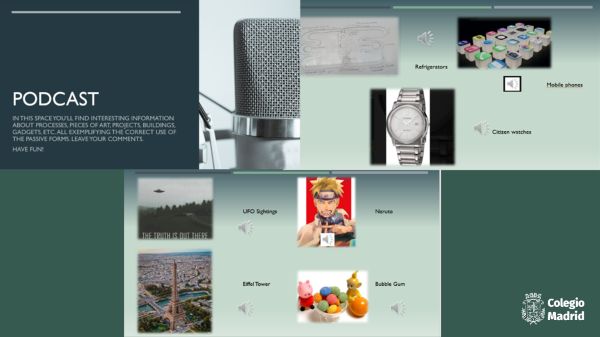How is it made? / ¿Cómo se hace?

How is it made?
Some language structures may seem complex or not so common in our everyday speech but when they’re presented in a more familiar context, the understanding and use of them becomes more natural and easy to identify.
That is the case of the passive voice. B2 students chose a topic of their interest: an important building, a product or situation which process of making, along with some fun facts and opinions, was explained in a podcast. Students made some research in different sources and wrote a script to be later recorded. All podcasts were shared and enjoyed by the groups.

¿Cómo se hace?
Algunas estructuras del lenguaje pueden parecer complejas o no tan comunes en nuestro habla cotidiana, pero cuando se presentan en un contexto más familiar, su comprensión y uso se vuelven más naturales y fáciles de identificar.
Ese es el caso de la voz pasiva. Los alumnos del nivel B2 eligieron un tema de su interés: un edificio importante, un producto o una situación cuyo proceso de elaboración, junto con algunos datos curiosos y opiniones, se explicaron en un podcast. Los chicos investigaron en diferentes fuentes y escribieron un guión para ser grabado más tarde. Los podcasts fueron compartidos y disfrutados por los grupos en clase.
Roxana Jiménez
Profesora de inglés
Bachillerato